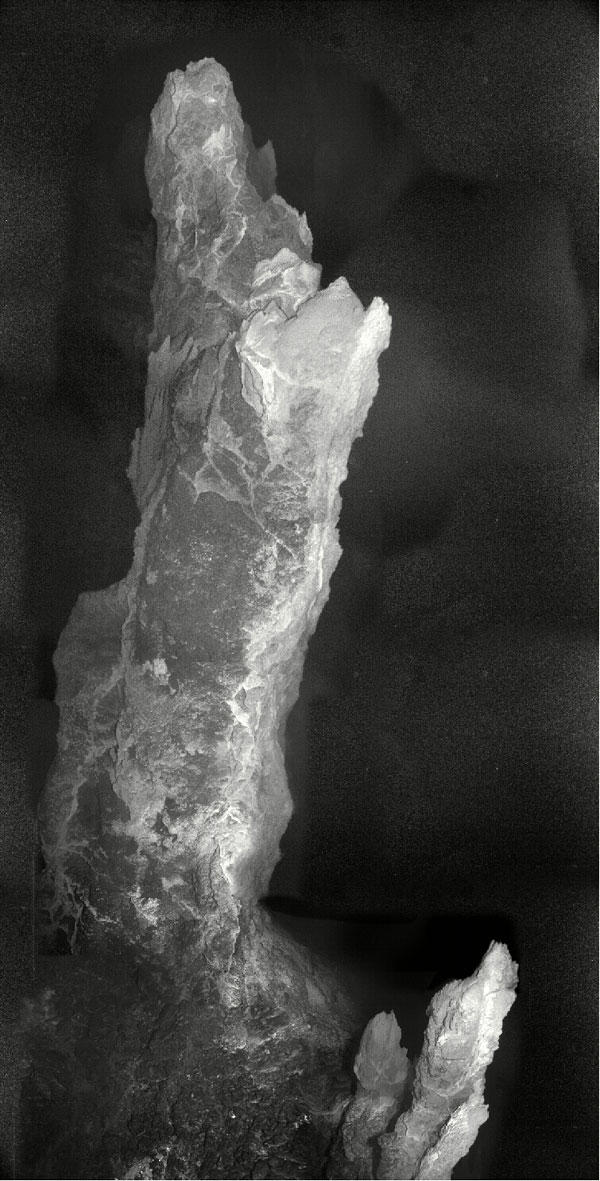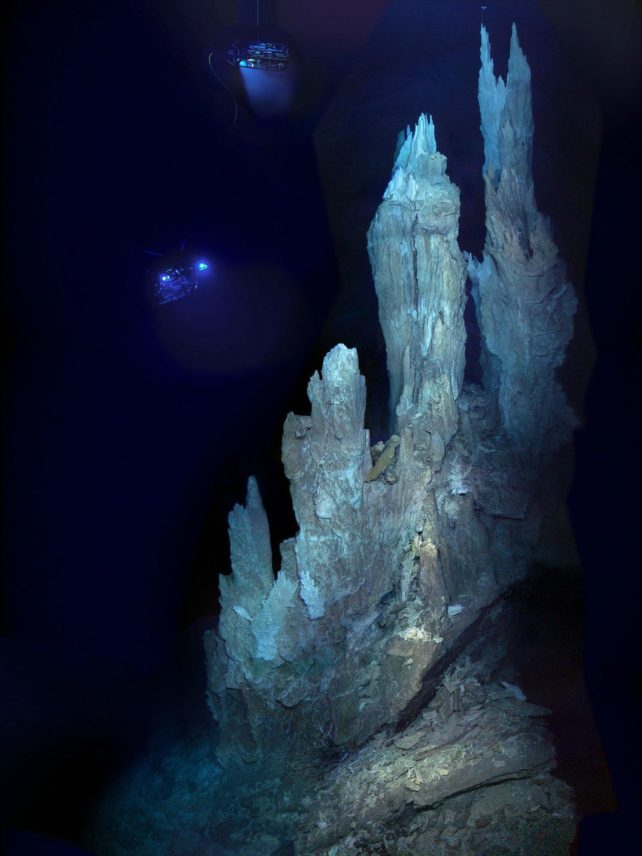Extraordinary Underwater 'Lost City' Defies Earthly Norms
An extraordinary underwater 'lost city' defies earthly norms near the summit of an underwater mountain to the west of the Mid-Atlantic Ridge. The creamy carbonate surfaces and pillars take on an ethereal blue color when illuminated by a remotely operated vehicle dispatched for exploration.
Author:Hajra ShannonReviewer:Paula M. GrahamNov 20, 202396 Shares11.9K Views

An extraordinary underwater 'lost city' defies earthly normsnear the summit of an underwater mountain to the west of the Mid-Atlantic Ridge. The creamy carbonate surfaces and pillars take on an ethereal blue color when illuminated by a remotely operated vehicle dispatched for exploration.
These structures vary in size, ranging from small formations resembling toadstools to a majestic monolith towering at 60 meters (almost 200 feet). This unique underwater landscape is known as the Lost City.
Unveiled by scientists in 2000, this remarkable hydrothermal field lies over 700 meters (2,300 feet) below the ocean's surface, making it the most enduring venting environment ever identified. No other site comparable to the Lost City has been discovered to date.
For a span exceeding 120,000 years and potentially even longer, the rising mantle in this region has interacted with seawater, releasing hydrogen, methane, and various other dissolved gases into the ocean. Within the fissures and recesses of the vent field, hydrocarbons nourish unique microbial communities, thriving even in the absence of oxygen.
Chimneys expelling gases at temperatures as high as 40 °C (104 °F) provide a habitat for numerous snails and crustaceans. Although larger creatures like crabs, shrimp, sea urchins, and eels are uncommon, they still inhabit this extraordinary environment.
Despite the extreme conditions, the area seems to be brimming with life, prompting researchers to deem it worthy of attention and protection. While similar hydrothermal fields likely exist in other parts of the world's oceans, the Lost City stands as the only one thus far discovered by remotely operated vehicles.
The hydrocarbons emitted by the vents at the Lost City are not the result of atmospheric carbon dioxide or sunlight but instead stem from chemical reactions on the deep seafloor.
Given that hydrocarbons serve as the fundamental building blocks of life, this raises the intriguing possibility that life could have originated in an environment akin to this one - not only on our own planet but perhaps elsewhere in the cosmos.
"This is an example of a type of ecosystem that could be active on Enceladus or Europa right this second," microbiologist William Brazelton told The Smithsonianin 2018, referring to the moons of Saturn and Jupiter. "And maybe Mars in the past."
In contrast to underwater volcanic vents known as black smokers, which have been considered potential early habitats, the ecosystem of the Lost City does not rely on the heat generated by magma. While black smokers primarily generate minerals rich in iron and sulfur, the chimneys of the Lost City emit significantly higher amounts of hydrogen and methane, up to 100 times more.
Furthermore, the calcite vents in the Lost City are notably larger than black smokers, indicating a longer duration of activity. The tallest among these monolithic structures is named Poseidon, paying homage to the Greek god of the sea, and it extends to a height exceeding 60 meters.
To the northeast of the towering structure, there exists a cliffside exhibiting intermittent bursts of activity. Researchers from the University of Washington have characterized these vents as 'weeping,' releasing fluid that gives rise to "clusters of delicate, multi-pronged carbonate growths that extend outward like the fingers of upturned hands." Regrettably, the allure of this extraordinary terrain extends beyond the scientific community.
In 2018, it was announced that Poland had secured the rights to deep-sea mining in the vicinity of The Lost City. While the actual thermal field holds no precious resources for extraction, the potential destruction of the city's surroundings raises concerns about unintended consequences.
Scientists caution that any plumes or discharges resulting from mining activities could easily impact the remarkable habitat of the Lost City. In response to these threats, some experts are advocating for the Lost City to be designated as a World Heritage site, aiming to safeguard this natural wonder before irreversible harm occurs.
In The End
For tens of thousands of years, the Lost City has stood as a testament to the enduring resilience of life. It would be unfortunate if, in our actions, we jeopardize this testament to the forces of nature.
Jump to

Hajra Shannon
Author

Paula M. Graham
Reviewer
Latest Articles
Popular Articles

